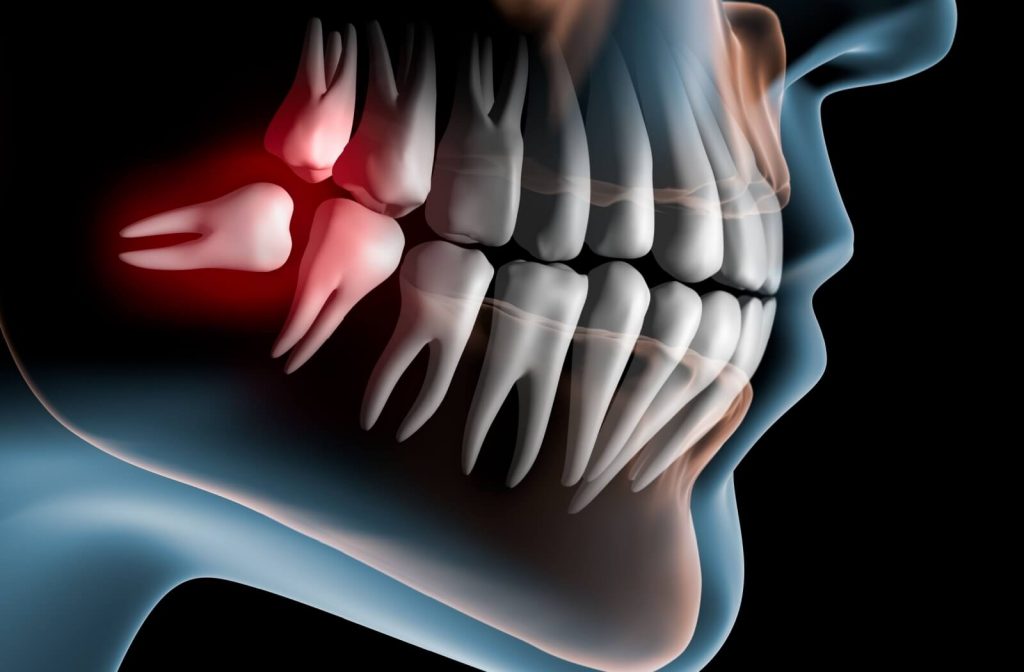When Do Wisdom Teeth Grow In?
Wisdom teeth development is one of those dental milestones that can bring both curiosity and concern for teens and their families. Understanding when these third molars typically emerge and what to expect during the process can help ease worries and ensure proper oral health care.
Most people’s wisdom teeth grow in between the ages of 17 and 25, although this timeline can vary from person to person. Some people may notice their wisdom teeth beginning to emerge as early as their mid-teens, while others might not see any movement until their late twenties or beyond. This natural variation is normal and reflects the unique development patterns each person experiences.
You should visit your dentist regularly so they can monitor the development of your wisdom teeth. This way, any potential problems can be dealt with early.
Common Age Range for Wisdom Teeth Growth
Most people’s wisdom teeth erupt between the ages of 17 and 25, but this timeframe can vary based on individual factors. Factors such as genetics, jaw size, and overall dental development can influence when these teeth decide to make their appearance.
Why Early Monitoring of Wisdom Teeth Is Important
We recommend regular monitoring when you begin developing your wisdom teeth for 2 important reasons.
Avoiding Surprises
Regular dental monitoring allows your dental team to track wisdom tooth development long before they become visible or cause discomfort. Through routine examinations and X-rays, we can identify developing wisdom teeth and predict their likely path of emergence. This proactive approach helps prevent unexpected pain or complications that might otherwise catch you off guard.
Early detection also provides valuable time to discuss treatment options if problems are likely to occur. Rather than waiting until wisdom teeth cause pain or crowding, we can work together to create a plan that prioritizes your comfort and long-term oral health. This collaborative approach ensures you feel informed and prepared every step of the way.
Preventing Crowding
One of the most significant concerns with wisdom tooth development is the potential impact on existing teeth. When wisdom teeth attempt to emerge into a mouth that lacks adequate space, they can push against neighbouring teeth and disrupt years of orthodontic work or natural alignment.
Early monitoring enables us to determine whether your mouth has sufficient space to accommodate these additional teeth. If space appears limited, we can discuss preventive measures to avoid crowding from becoming problematic. This proactive approach often leads to better outcomes and helps preserve the beautiful smile you’ve worked hard to maintain.
Potential Problems with Wisdom Teeth Growth
There are a few common problems that can accompany the growth of wisdom teeth.
Impaction
Impacted wisdom teeth occur when there isn’t enough room in the mouth for proper emergence.
Impacted wisdom teeth can cause significant discomfort and may lead to complications if left untreated. The trapped tooth can create pockets where bacteria accumulate, potentially leading to infection or cyst formation. Understanding the signs of impaction—such as persistent pain, swelling, or difficulty opening your mouth—helps ensure prompt treatment when needed.
Crowding
Even when wisdom teeth emerge successfully, they may not have adequate space to function properly alongside your existing teeth. This crowding can gradually shift your other teeth out of alignment, undoing previous orthodontic work or creating new spacing issues.
The crowding process often occurs slowly, making it easy to overlook until significant changes have taken place. Regular dental visits help us monitor tooth positioning and identify crowding concerns early, when intervention options are most effective and comfortable.

Cavities & Decay
Wisdom teeth’s location at the very back of the mouth makes them challenging to clean thoroughly. Even with excellent oral hygiene habits, these teeth often accumulate plaque and food particles that can lead to decay. The difficulty in reaching wisdom teeth with toothbrushes and floss creates ongoing maintenance challenges.
Tracking Wisdom Teeth Development
Consistent dental visits every 6 months provide the foundation for effective monitoring of wisdom teeth development. During these appointments, we can carefully examine the back areas of your mouth for signs of emerging teeth, changes in gum tissue, or shifts in the positions of existing teeth.
Dental X-Rays
The frequency of X-rays depends on your individual situation and development timeline. Some people benefit from annual imaging, while others may need more frequent monitoring. We’ll work with you to determine the schedule that best supports your oral health while minimizing unnecessary exposure.
What Should You Do Next?
If you’re experiencing symptoms that might indicate wisdom tooth development—such as tenderness in the back of your mouth, difficulty chewing, or changes in your bite—scheduling a dental appointment provides the clarity and peace of mind you deserve. Even if you’re not experiencing symptoms, proactive monitoring during your regular check-ups ensures any concerns are addressed promptly.
Make Dental Health a Priority with Bright View Dental Care
Remember that wisdom tooth experiences vary from person to person. Some people keep their wisdom teeth throughout their lives without problems, while others benefit from having them removed. The key is working with a dental team that understands your unique situation and provides caring, personalized guidance every step of the way.
Whether you’re a parent wondering about your teenager’s dental development or an adult experiencing new symptoms for the first time, know that support and expert care are available. Contact our compassionate team at Bright View Dental Care today and book an appointment for a wisdom teeth consultation.





